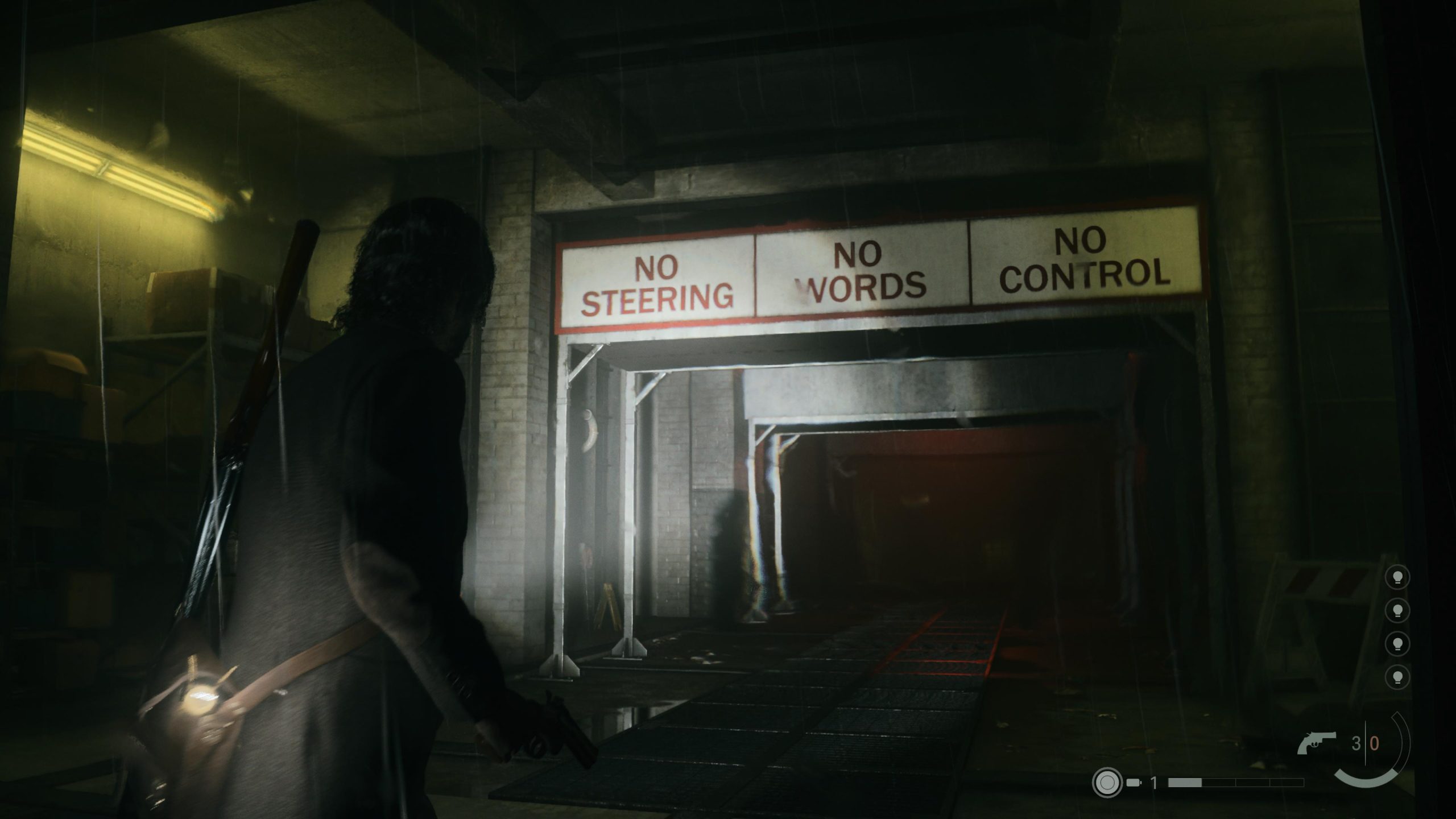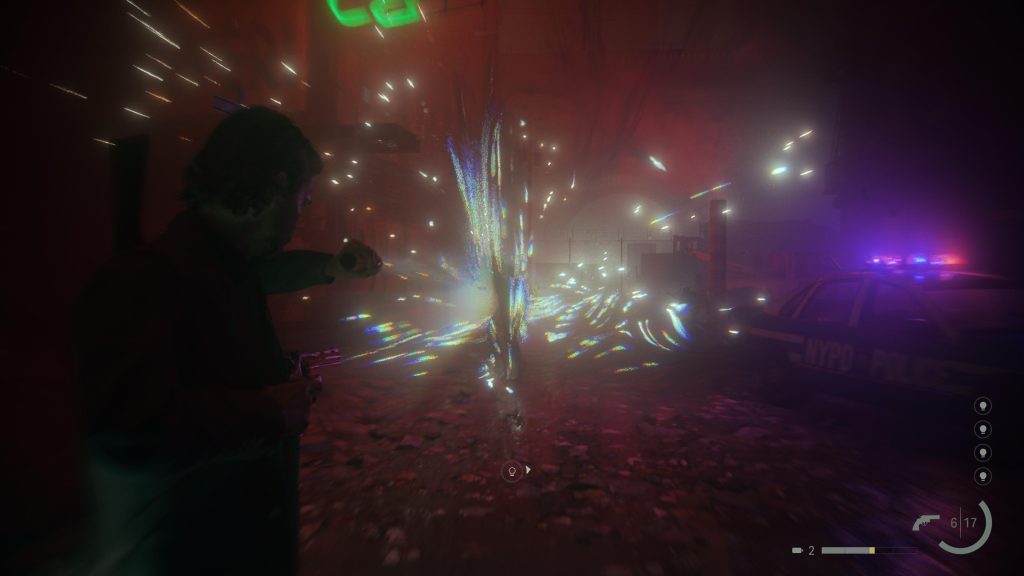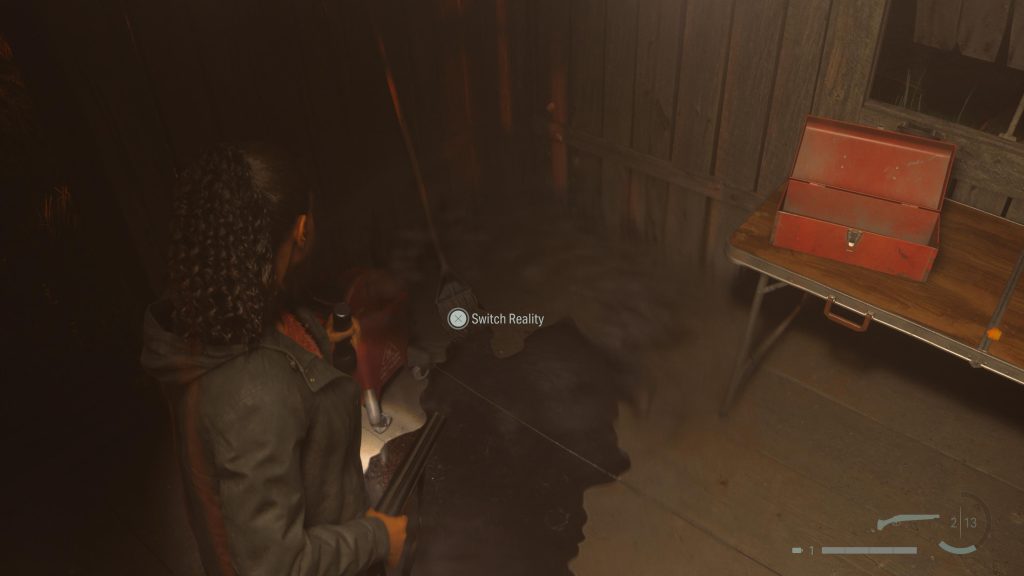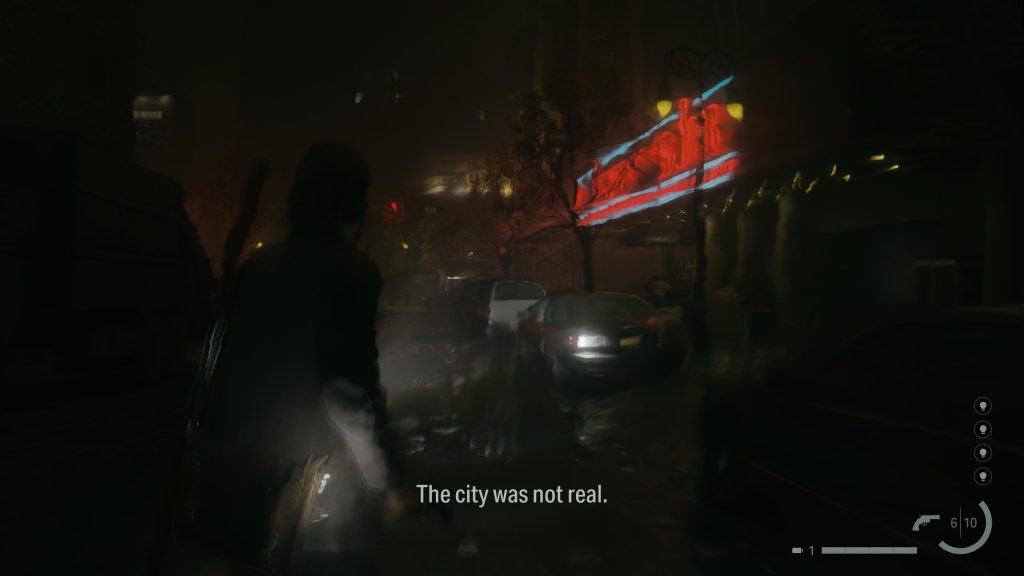
Alan Wake 2 is the sequel to 2010's Alan Wake, a cult hit from Finnish studio Remedy Entertainment. It solidifies the connections in the so-called "Remedyverse" that were introduced in the DLC to 2019's Control, and continues the story of Alan Wake more than a decade after it left off.
The story follows two parallel paths: the first is that of Saga Anderson, an FBI agent who arrived in the quaint pacific northwest town of Bright Falls to investigate the murder of a former agent, and Alan Wake, the eponymous novelist who's been struggling to escape the dreamlike nightmare dimension in the depths of the lake ever since the events of the first game. As Saga begins to break through the barriers and reach out to Wake, it becomes clear that there may be a way to rescue him from the Dark Place. But to accomplish such a task may require using the Dark Place's own dangerous supernatural powers: the ability to rewrite the history and reality of Bright Falls.

Poetry of Fear
To solve these mysteries and undo the efforts of the mysterious Dark Presence, there's more to be done than simply rewriting the story. In the Dark Place, Alan is haunted by the Dark Presence itself and the innumerable shadows it conjures. In Bright Falls, Saga is stalked by similar shadowy presences infecting townsfolk and turning them into monsters. The game hews to a standard survival-horror style, complete with genre staples like limited inventory, ammo management, and startling jump scares.
Unfortunately, though often interesting, the survival horror elements can weigh the game down at times. They're never so difficult that they truly challenges veterans of the genre, but they're a little too obtuse and unpredictable to be especially approachable for the less prepared. On the whole, it's tolerable; moments of harrowing combat and tense, hurried exploration still stand out. But its weakest elements poke through: enemies can feel difficult to meaningfully damage or move so erratically that dodging seems near-impossible. Maybe I don't have a taste for the genre, but I found myself frustrated on several occasions.
Fortunately, the game always guides towards the critical path, avoiding any heavy reliance on optional pickups or thorough exploration of hostile areas. Instead, optional areas are clearly designated and the current objective is always indicated in the menus. Saga and Alan each have an imagined physical space they can retreat to as they explore, where Saga's case files and collected information can be found, and where Alan's scenes and plot points can be rearranged. Though I found the survival-horror elements to be often frustrating, I appreciated how the game generally indicated a path forward despite the challenges, and remained interesting by overlaying the detective and writer elements.

Stories About Stories
Fighting monsters and rationing ammo, however, is not why this game makes my list. The original Alan Wake was broadly a love letter to supernatural horror. Alan Wake 2 takes this further in every way possible. It's a loving homage to horror, police procedurals, film noir, art cinema, heavy metal, and even metafiction itself. It's a beautiful game full of evocative imagery, oozing with a fondness for cinema; more than just a game with a lot of cutscenes, it's steeped in cinematic imagery and direction. It carefully unravels the tropes that make its many genre influences tick, both heightening them and re-inscribing them onto one another. The noir detective stories in the Dark Place feed into the horror story of the murderous cult, while elements of the same horror story bleed into Saga's procedural cop story in Bright Falls. Saga's name, even, can be no coincidence.
This genre blending and remapping is a critical part of the game's strange, spiraling story. The portion that takes place in the Dark Place uses dreamlike logic to flit between genre storytelling and absurd spectacles. Spaces wrap back around onto each other in impossible ways, or change in response to the presence or absence of light. The twin storylines create uncanny mirrors at every turn; Alan's plot board matches Saga's mental evidence board, Alan's fictional detective mirrors Saga's own partner, allusions to the whereabouts and fate of Alan's wife Alice echo his own in many ways. Shadows cast by the streetlights. Reflections in the lake.
Alan Wake 2 is such an unending barrage of replicated and remixed patterns, symbols, and ideas that it would take forever to dig in (thought the analyses are, of course, out there). Just writing this post, I keep noticing additional resonances. But even despite its endless self-reference, it leaves just enough dangling threads to invite further curiosity.

Conclusion
Alan Wake 2 is constantly playing with the distance between fiction and reality, between one variation of genre tropes and the next. It dances around truth and canonicity at every possible turn, making allusions to the real-life actors who play the live-action versions of the characters and their completely separate voice actors. Its bombardment of self-reference and metafictional flourishes could very easily become exhausting and overplayed, but it somehow never does. Alan Wake 2 never pauses to luxuriate, never stops to ask "isn't this so clever?"; it simply barrels forward with unrelenting momentum and unfettered affection for genre, trope, twist, and callback. It takes itself incredibly seriously, but always finds space for strange and surreal humor.
I said before that Alan Wake 2 is a love letter to numerous genres, but it might be a love letter to storytelling itself. It adores the strange mashup of acting and writing and narration and cinematography and environment art and gameplay design and so on that result in video games. It's Remedy being their most indulgent, putting all of their resources behind something so unapologetically weird and extravagant and culturally-inflected that it somehow wraps around to being almost universally lovable. I'm so happy that they made this ridiculous game, and I can't wait to see what they do next.